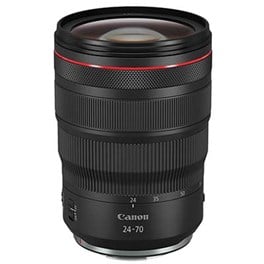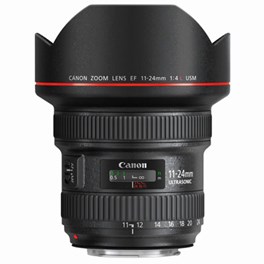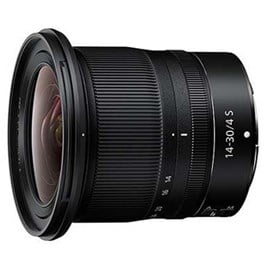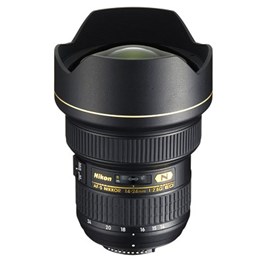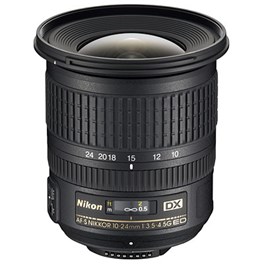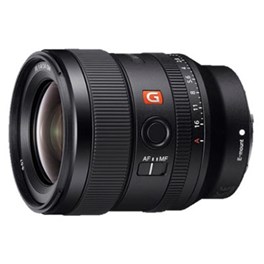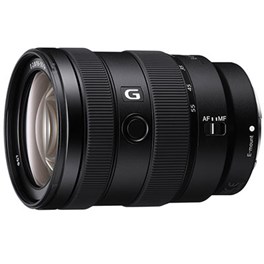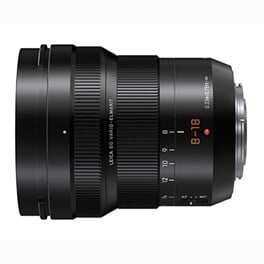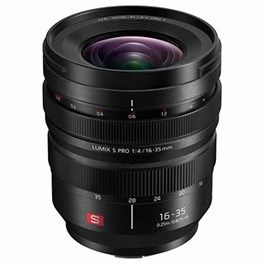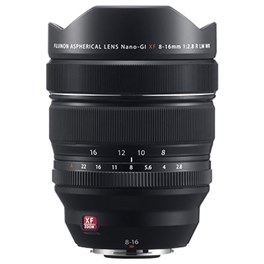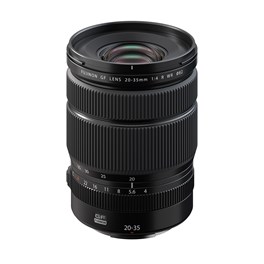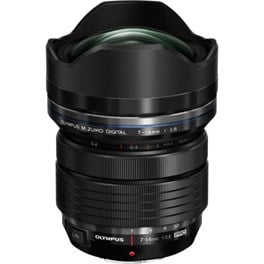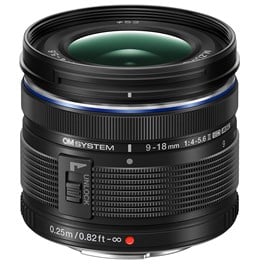
The best lens for landscapes is what you need to capture dazzling views of the world around us. Expansive skies, mountain vistas, rolling fields and enchanting forests – the best way to capture it all is to get hold of a premium landscape photography lens.
You may be wondering what are the main criteria we’re looking at for landscape lenses? So, before we start the list, let’s quickly run through the key points you’re looking for in a good landscape lens. Remember, you can always consult our photography jargon-buster if you’re unfamiliar with any technical terms. And, it's also a good idea to consider the best camera for landscape photography.
Wide-angle focal length - This isn’t necessarily a requirement – plenty of great landscapes have been shot on standard and even telephoto lenses. However, it’s undeniable that wide-angles are heavily favoured by landscape photographers as they are perfect for fitting huge, sweeping vistas into an image. Many landscape shooters favour a short zoom for more flexibility, though primes can also have their place. We’ve focused mostly on wide-angles for this guide, though have included some great standard lenses where we feel they merit inclusion. We have also included both zooms and primes.
Edge-to-edge optical quality - Obviously photographers in all disciplines want their images to be sharp. However, in landscape photography it is particularly important that we don’t see too much fall-off in the corners as we’re generally not just documenting a single central subject, but a whole expansive scene.
Weather-sealing - Landscape photography is by its nature an outdoor pursuit, so you ideally want a lens that can handle a bit of rainfall without needing to be rushed back into the bag. Good weather sealing also means that you can venture into snowy conditions to capture dramatic, wintry images – just make sure to wrap up warm.
While this may sound like it’s going to add up to an expensive lens, there are a lot of features that landscape photographers can afford to compromise on. For instance, you don’t need to worry about fast autofocus – the landscape isn’t going anywhere. Built-in stabilisation can be nice to have in landscapes, but it isn’t essential, as you’ll almost certainly be using a tripod.
Having an ultra-wide aperture isn’t especially vital in landscape, as you’ll likely be stopping down to increase your depth of field. Portrait and street shooters would likely turn their noses up at an f4 lens, but for landscapes, it’ll serve perfectly well.
We’ve divided our guide up into sections for the best landscape lenses for all the major lens mounts in all the main camera systems. So, let’s get into it.
Best Canon Lens for Landscapes
Peruse the shortlist of any landscape photography competition, and you’ll find images taken on Canon kit. Whether you favour a good old-fashioned DSLR or one of the newer mirrorless systems, there is an entire ecosystem of Canon equipment ready to cater to your every landscape-shooting whim.
Before you start browsing lenses, you’ll need to know what lens mount you’re working with. Using a Canon DSLR? Then it’s the venerable EF-mount, with EF-S lenses that are especially designed to fit the smaller-sensor models. If you’ve gone mirrorless, then you may be using either the flagship EOS R system, which takes RF-mount lenses, or the small and portable EOS M cameras, which use EF-M lenses.
Any and all of these systems are a great choice for landscapes, so we’ve included some lens options for all of them. Where we’ve picked out premium lenses, we’ve also suggested some budget-friendly options, as naturally, everyone is working with different means.
Canon RF 24-70mm f2.8L IS USM Lens
The Canon RF 24-70mm f2.8 L IS USM Lens is the ultimate full frame mirrorless standard zoom lens for professionals who strive to achieve perfect edge-to-edge sharpness in their photographic works of art. Featuring excellent optical engineering, a fast f/2.8 max aperture as well as 5-stop image stabilisation, the Canon RF empowers the user to stay creative in all situations ranging from portrait to landscape photography. Thanks to the Nano USM motor which ensures instant and silent AF with exceptional smoothness the user can take images with a quick, accurate focus making this lens ideal for both stills and video. In addition to this, the lens has three glass moulded aspherical and three UD lens elements, advanced optical coatings, and a 9 blade aperture. The Lens Control Ring allows the user to control the lens settings and utilise it in a set of diverse scenarios such as macro work, with focusing as close as 21cm. With the Canon RF 24-70mm, the user can master light from any angle.
£2,319.00 View
Pros:
- Spectacular optical quality
- Robust, pro-grade construction
Cons:
- Some vignetting correction required
- Very bulky and heavy
For many years, Canon’s EF 24-70mm L lenses (the f2.8 version and the f4) were institutions among landscape photographers, boasting exceptional sharpness and a catch-all focal range that made them useful for all sorts of different shoots. A premium RF-mount successor was inevitable, and the Canon RF 24-70mm F2.8L IS USM arrived to much anticipation from landscape shooters.
Canon clearly made a decision early in development of this lens that the overwhelming priority was sharpness and quality. As such, the firm has not concerned themselves with making it lightweight or portable – this is a big lens and no mistake. But the image quality right the way through the zoom range is phenomenal, right to the edges of the frame. Build quality too is reassuringly solid, just as you’d expect from a premium lens. If it’s out of your budget, try the Canon RF 15-30mm f4.5-6.3 IS STM, a compact and lightweight lens that offers a bit more width for landscape photography.
Canon EF 11-24mm f4L USM Lens
The Canon EF 11-24mm f/4L USM lens joins Canon's professional L-series of flagship lenses with complete range of ultra-wide-angle focal lengths in a single high-quality zoom lens. Perfect for capturing landscapes, architecture and interior shots, this lens is world's widest-angle rectilinear zoom lens with an advanced optical design involving 3 different kinds of lens coating to deliver superb image quality with minimal distortion. Near-silent autofocus and full-time manual override lets you fine tune focus without leaving AF mode.
£2,999.00 View
Pros:
- Incredibly wide angle of view
- Constant f4 aperture
- Rectilinear design
Cons:
- Very heavy for a wide-angle
- Cannot take filters
The Canon EF 11-24mm f4L USM Lens is a legend. It’s the widest zoom lens with a rectilinear design – as opposed to a fisheye/curvilinear design – meaning that it captures an incredible angle of view without causing straight lines to be significantly curved. As sheer feats of engineering go, it’s quite an achievement, and the end result is an astounding lens that produces striking landscape images, and does so with a constant aperture of f4.
This lens fits Canon’s full-frame EF-mount DSLRs. Bear in mind that it doesn’t support a filter thread due to its bulbous front element, so you may want to consider getting an adapter like the Lee SW150 Mark II, which is designed especially for this lens.
If the 11-24mm is out of your budget or you’re using a smaller system, consider the Canon EF-S 10-18mm f4.5-5.6 IS STM lens, which fits Canon’s APS-C DSLRs like the EOS 250D.
Best Nikon Lens for Landscapes
We’ve assembled a spectacular selection of lenses for Nikon users to shoot landscapes – whether you’re using a DSLR or a mirrorless camera. Nikon’s mirrorless Z-mount, which includes both full-frame and APS-C cameras, is building up a spectacular selection of fantastic lenses. Of particular note is its ‘S-line’ range, which denotes lenses that have passed a set of stringent standards for optical quality and sharpness. If you see a Nikon Z lens with ‘S’ in its title, you can feel assured you’re about to be very, very impressed.
If on the other hand you’re using Nikon F-mount DSLRs, then you have a lot of choice on your hands, as this lens mount has been going strong for decades. We’ve picked out a couple of options for this mount, including both a full-frame (FX, in Nikon’s parlance) option and a lens for APS-C (DX) Nikon DSLRs.
Nikon Z 14-30mm f4 S Lens
The NIKKOR Z 14-30mm f/4 S, an ultra-wide-angle zoom lens compatible with the Nikon Z mount system and is part of the S-Line. This ultra-wide-angle zoom lens covers the 14mm to 30mm with a constant maximum aperture of f/4. The NIKKOR Z 14-30mm f/4 S is the world's first full-frame lens to support direct filter attachment, despite starting at a 14mm focal length.
£1,349.00 View
Pros:
- Superb, high-quality optics
- Can directly attach filters
- Customisable control ring
Cons:
- Some may prefer an f2.8
- No Vibration Reduction
This was a relatively early lens in the Nikon Z-mount range, and it showed right away Nikon’s ambitious approach to pushing this system forwards. It’s a spectacularly sharp full-frame wide-angle lens, with exceptional optics that make for flat-out stunning colour rendition and contrast. Distortion and colour fringing are basically non-existent, and the sharpness extends all the way into the corners of images. Incredibly impressive stuff all-around.
One thing that’s particularly notable about this wide-angle lens is that it can accept screw-on filters with an 82mm thread size – which is unusual for lenses that extend all the way to a 14mm wide-angle perspective. This means you can make liberal use of NDs, grad NDs and polarisers, all of which are hugely useful for landscape shooting, allowing you to take control of the light. The Z 14-30mm lens is very portable too, and has been weather-sealed for outdoor use.
Nikon 14-24mm f2.8 G AF-S ED Lens
A wide-angle, fast aperture lens with a revolutionary optical design, the Nikon 14-24mm f2.8 G AF-S ED Lens features a Nano Crystal coating to reduce the effects of ghost and flare, and delivers edge-to-corner sharpness that can surpass that of equivalent fixed focal-length lenses. The Silent Wave Motor (SWM) feature provides swift autofocus with superior accuracy and ultra-quiet operation.
£1,749.00 View
Pros:
- Top-notch sharpness and colour reproduction
- Weather-sealed
- Wide, rectilinear design
Cons:
- Can’t take filters
- More than 1kg weight
Similar to Canon’s 11-24mm featured above, this is Nikon’s flagship ultra-wide rectilinear zoom lens. While the Nikon 14-24mm f2.8 G AF-S ED doesn’t reach such a dizzyingly wide angle of view, it’s still immensely useful for landscape photographers, and delivers optical quality in spades. Thanks to the large-diameter Precision Glass Molding (PGM) element, coma aberration is virtually eliminated, and the lens also benefits from Nano Crystal lens coatings that ensure colour reproduction is top-notch.
The bulbous front element of this lens prevents filters from being screwed on (as does the permanently screwed-on hood that controls for flare), so you’ll need to bear that in mind when planning your shoots. Also, weighing in at more than 1kg, this lens and an FX-format Nikon DSLR are going to make for a hefty pair, so a good camera support is going to be a must.
Nikon 10-24mm f3.5-4.5 G AF-S DX Lens
The Nikon 10-24mm f3.5-4.5 G AF-S DX Lens is an ultra wide-angle 2.4x zoom lens with 109° to 61° field of view which is the equivalent to 15-36mm in 35mm format. Designed for use with DX-format digital SLRs, the high quality optical design boasts three aspherical and two ED glass elements to deliver images with outstanding resolution, contrast and minimized distortion. This lens is ideal for capturing landscapes, images with exaggerated perspectives and for shooting in tight spaces, it also comes with Nikon's exclusive Silent Wave Motor for smooth, quiet autofocus with all Nikon DX-format cameras.
£949.00 View
Pros:
- Great value for money
- Balances well with DX-format DSLRs
- 77mm filter thread
Cons:
- Some chromatic aberration
- APS-C only
If you’re using a smaller DX-format Nikon DSLR like the D5600 or D3500, then the Nikon 10-24mm f3.5-4.5 G AF-S DX lens is an excellent port of call for landscape work. It delivers an equivalent focal range of 15-36mm, and allows for the attachment of screw-in filters via its 77mm thread. While this is an older lens, it still impresses with a high-end optical design that incorporates three aspherical and two ED (extra-low dispersion) glass elements. The end result is a lens that delivers impressively sharp images right into the corners.
One thing to note though is that the lens does naturally produce some chromatic aberration at some focal lengths. Newer DSLR cameras will correct these automatically, so this should only really be noticeable if you’re using an older model – and even then, it’s easy enough to take care of in Adobe Camera Raw or similar software.
Best Sony Lens for Landscapes
The ultra-high resolution sensors of Sony’s flagship mirrorless Alpha cameras makes them some of the best cameras you can buy for landscape shooting, and accordingly, they’ve got the lens catalogue to go with it. With Sony having been producing E-mount cameras for more than a decade now, the catalogue of lenses has expanded immensely, and Sony users have some seriously tricky decisions to make. Recent years have seen the introduction of the G Master lenses, Sony’s full-frame lenses that are designed to get the very best out of high-quality sensors.
But it’s not all about full-frame, and many photographers begin their journeys on Sony’s excellent APS-C range, the A6000 series. There are some cracking lenses available for these cameras too, and we’ve picked out an excellent all-rounder of a lens that will enable any Sony APS-C user to get out there and shoot fantastic landscapes.
Sony FE 24mm f1.4 G Master Lens
Expertly engineered to deliver best in class performance across all aperture settings, the Sony FE 24mm F1.4 G Gaster Lens utilises Sony's specialist advanced optical technologies to satisfy the needs of the most demanding photographers. It features a compact and lightweight design with a filter diameter of 67mm and measures just 75.4mm x 92.4mm and weighs a mere 445g. The FE 24mm F1.4 combines the high resolution and beautiful bokeh that are the signature of the G Master series.
£1,159.00 inc. Cashback View
Pros:
- Class-leading optical quality
- Not ridiculously heavy
- Comprehensive weather-sealing
Cons:
- Prime lens may not be for everyone
While we’ve mainly focused on zoom lenses in this guide, many landscape photographers appreciate a prime for its top-tier optical quality and larger maximum aperture. The Sony FE 24mm f1.4 G Master is one of the best prime lenses around right now, and its 24mm focal length makes it pitch-perfect for landscape photography. Designed to meet the needs of high-resolution cameras like the Sony A7R V, it uses a construction of 13 optical elements to deliver images of unparalleled sharpness right to the edges of the frame.
One thing we really appreciate about this lens is that it isn’t too heavy. While not every photographer minds a heavy lens, it can be restrictive for some, and it’s great to see that Sony didn’t get carried away and turn its 24mm G Master into a lumbering dreadnought. Weighing just 445g, with a filter thread diameter of 67mm, it balances beautifully with Sony’s full-frame E-mount cameras.
Sony E 16-55mm f2.8 G Lens
The Sony E 16-55mm f2.8 G Lens features an APS-C zoom with a constant F2.8 aperture. It's outstandingly compact design makes it a perfect travel companion. The lens is a great all-rounder that offers its users performance worthy of the G Lens series. The new optical design provides fantastic edge-to-edge resolution as well as stunning bokeh.
£959.00 inc. Cashback View
Pros:
- Weather sealed
- Constant f2.8 aperture
- Good sharpness at edges
Cons:
- APS-C only
- Barrel distortion at 16mm
If you’ve just started out using an APS-C Sony camera like the A6600, then this makes for a fantastic upgrade lens to start shooting landscapes. Its constant f2.8 aperture and 24-82.5mm equivalent focal length make it a credible alternative to a standard professional workhorse 24-70mm lens. And with its complex internal optical design that delivers excellent edge-to-edge sharpness in images, the Sony E 16-55mm f2.8 G acquits itself very well indeed when it comes to landscape shooting.
The lens has comprehensive weather sealing, meaning you can get out and about in inclement conditions without fear. It performs well throughout its zoom range – there is some pronounced barrel distortion at 16mm, but this is easy to correct with software, or will just be automatically taken care of if you’re using a newer camera. It’s lenses like these that show just how much potential there is in Sony’s APS-C E-mount system.
Best Panasonic Lens for Landscapes
If you’re looking for a good Panasonic landscape lens, that means you’re using one of two things. You may be rocking a Micro Four Thirds mirrorless camera, part of the standard that Panasonic jointly set up with the manufacturer formerly known as Olympus (rebooted recently as OM SYSTEM). This means you’ve got a huge range of lenses to choose from, as this system has been going for quite some time. It is important to remember though that the small Four Thirds incurs a significant crop factor that doubles the effective focal length of a lens – meaning a 50mm lens behaves like a 100mm lens. This means you need to think even wider when making your pick for a good landscape lens.
However, a Panasonic user may also mean someone who is using one of the firm’s new, successful Lumix S full-frame cameras. These use a whole different lens mount – the L-mount, developed by Panasonic in partnership with Leica and Sigma – and while this system hasn’t been around as long as Micro Four Thirds, it’s making up for lost time with a suite of truly excellent lenses. It was difficult for us to narrow down our picks for this section!
Panasonic 8-18mm f2.8-4 ASPH Vario Lens
Panasonic has the launched the second lens of the LEICA DG VARIO-ELMARIT F2.8-4.0 Series, covering 16 mm Ultra-Wide Angle to 36 mm with high mobility. The new LEICA DG VARIO-ELMARIT F2.8-4.0 Series achieves superb picture quality and high performance for both photo and video recording but remains compact in nature. The 8-18 mm F2.8-4 is fully weather-sealed and freeze proof (to -10° C) and has a Nano Surface coating to reduce flare and ghosting.
£899.00 View
Pros:
- Weather sealed and freeze-proof
- Not too heavy
- Excellent sharpness
Cons:
- Some flare susceptibility
You can’t talk about shooting landscapes on Micro Four Thirds without bringing up the fantastic Panasonic 8-18mm f2.8-4 ASPH Vario Lens. Delivering an equivalent focal range of 16-36mm, this is a dazzlingly sharp lens that has been fully kitted out for serious outdoor shooting. It’s thoroughly weather sealed, and with a freeze proof rating down to -10°C, it’s well equipped for wintry shoots and snowstorms.
Internally, an optical construction of 15 elements in 10 groups delivers the goods, with extra-low dispersion lenses, aspherical lenses and an ultra-high refractive index lens controlling for chromatic aberrations and distortion, which are kept to negligible degree. We love in particular the level of contrast this lens delivers – images just look so punchy and vibrant. It also weighs just 315g, meaning it doesn’t compromise one of the key advantages of Micro Four Thirds – its lightweight handling and portability.
Panasonic LUMIX S Pro 16-35mm f4 Lens
The Panasonic LUMIX S Pro 16-35mm f4 Lens is a welcome addition to the growing range of Panasonic L mount lenses. It is suitable for a wide range of situations from landscapes, architecture to portraiture. The lens is comprised of 12 elements in 9 groups (3 aspherical lenses, 1 ED lens, 1 UHR lens) and features 9 diaphragm blades which can product some smooth bokeh. The lens is also splash, dust, and freeze proof (down to -10°C) meaning that your creativity will not be limited with this stunning 16-35mm f4 Lens.
£1,499.00 View
Pros:
- Excellent sharpness even at f4
- Well-engineered handling
- Leica-certified optics
Cons:
- Not as wide as other premium landscape lenses
In the full-frame corner, we have a beautifully engineered, Panasonic-made lens for the Lumix S system, the Panasonic LUMIX S Pro 16-35mm f4. While it may not go quite such a wide angle of view as the premium landscape lenses we’ve seen from the likes of Canon and Nikon, the LUMIX S Pro 16-35mm is built to Leica-approved standards of optical excellence, meaning it is very, very sharp indeed. Handling on the lens is wonderful, with a useful focus clutch mechanism that makes it easy to switch between auto and manual focus should you wish to fine-tune.
This is a lens with an f4 maximum aperture, and it’s sharp enough that the f4 setting is credibly in play for landscape photographers, who often need to stop down to get the lens into its sharpness sweet spot. Another thing that aperture helps with is the overall weight of the lens – not having f2.8, which most landscape shooters probably won’t use anyway, means it can stay at a svelte 500g.
Best Fujifilm Lens for Landscapes
We’re talking Fujifilm lenses for landscapes in this section, and once again we have our pick of two fantastic systems. First up, we’ve picked out a lens for the famous X-series mirrorless cameras. The line that revitalised Fujifilm’s fortunes, the X system has gone from its humble beginnings in 2010 to become possibly the most comprehensive range of APS-C cameras and lenses you can buy. Known for their gorgeous colour science and satisfying handling, Fujifilm X cameras are an excellent choice for landscapes.
On the other side of the tracks, you also have Fujifilm’s GFX mirrorless medium format cameras. This series has done great things for making large-sensor photography accessible to more people, introducing cameras that are both much more portable than conventional medium format models, and more affordable. If you want the ultimate in depth and detail in your landscapes, then this is the way to get it – and we’ve got the lens recommendation to go along with it.
Fujifilm XF 8-16mm f2.8 R LM WR Lens
The ultra-wide angle nature of the Fujifilm 8-16mm f2.8 XF R LM WR Fujinon lens makes it a perfect lens for a landscape, architecture or nightscape photographer. The lens offers razor sharp detail across the entire frame and even at the max F2.8 aperture. This constant F2.8 aperture is maintained by the 20 elements in 13 groups, including four aspherical lens elements to control distortion and spherical aberration. In addition, six ED lens elements including three super ED elements will control lateral chromatic aberration. This is truly a stunning lens and its technical superiority goes hand-in-hand with its premium build quality and weather-sealing.
£1,499.00 View
Pros:
- Constant f2.8 aperture
- Complete weather sealing
- Magnificent technical quality
Cons:
- Quite front-heavy on Fujifilm bodies
- Corner softness at the widest setting
A seriously capable wide-angle landscape lens for the Fujifilm X series, the Fujifilm XF 8-16mm f2.8 R LM WR is an outstanding optic that deserves to be paired with the very best Fujifilm cameras like the X-T5. The detail delivered by this lens really is razor sharp across the frame, aided by a field curvature correction mechanism. This results in pretty much flawless performance throughout the zoom and aperture ranges (there’s just a tiny bit of corner softness at 8mm, but not enough to seriously worry about).
The lens is weather-sealed, with a magnesium-alloy body, and has a constant aperture of f2.8 that expands its utility in low light. One thing to bear in mind is that while it’s not a heavy lens, it does make for quite a front-heavy setup when mounted to many X-mount cameras. Something to be aware of when you’re positioning your tripod.
Fujifilm GF 20-35mm f4 R WR Lens
As the widest lens in the series, the GF 20-35mm boasts an incredible 108°-76° angle of view, a constant f4 aperture, and a sensor that is 1.7x larger than the full-frame standard. Whilst this large format zoom’s premium optical design is built for high-resolution images, its compact and lightweight chassis make it the perfect companion for landscape, travel and architectural photographers alike.
£2,349.00 View
Pros:
- Wider than other GF lenses
- Sharp enough to make 100MP images
- Very solid construction
Cons:
- Autofocus sometimes hunts…
- That’s about it!
The larger sensor of a medium format Fujifilm GFX camera means the crop factor of this lens works differently to what we’re used to – it’s actually wider than it appears, providing a full-frame equivalent range of 16-28mm. This is the widest zoom lens you can get for a GFX camera (Laowa offers some wider primes), meaning for many users, it’s the go-to lens when it comes to shooting high-resolution landscapes.
Any lens for the GFX system has to be up to the technical challenge of capturing 100MP images on the likes of the GFX 100S, and the Fujifilm GF 20-35mm f4 R WR smashes it out of the park. Its technical quality is dazzling, with superb control of aberrations and distortions. It really delivers on that medium format look, with sumptuous depth and detail in images, and with comprehensive weather-sealing too, it’s difficult to imagine any reason a GFX landscape photographer wouldn’t snap this lens right up.
Best Olympus / OM System Lens for Landscapes
We’re firmly back in the realm of Micro Four Thirds now as we round off our guide with the best Olympus and OM SYSTEM lenses for landscapes. Remember that the MFT system means participating lenses and cameras work together interchangeably, so the Panasonic 8-18mm lens we suggested in our earlier section will work just fine on your Olympus or OM SYSTEM camera, and vice versa.
Just in case you’re confused – Olympus and OM SYSTEM are fundamentally the same thing. After Olympus sold its imaging division, it was bought by OM Digital Solutions and reborn as OM SYSTEM, with the OM SYSTEM ‘Olympus’ OM-1 camera serving to bridge the gap. All compatibility is completely the same, so you can browse between the two brand names at will. We’ve picked out some exceptional lenses for this system that deliver the goods for landscape shooting – both a premium lens, and one that’s a bit more budget-friendly.
Olympus M.Zuiko Digital ED 7-14mm f2.8 PRO Lens
Save £125 with code OLY125
The Olympus 7-14mm f2.8 PRO M.ZUIKO Digital ED lens is the first wide-angle Micro Four Thirds zoom in the M.ZUIKO PRO series. The lens has a compact, lightweight and weatherproof build, as well as the very best optical construction to deliver excellent results. Additional features of the Olympus 7-14mm f2.8 PRO M.ZUIKO lens include a manual focus clutch, and an L-Fn button on the base of the lens.
£1,249.00 View
Pros:
- Super-wide rectilinear design
- Pro-grade handling
- Weather-sealed metal build
Cons:
- No filter attachment
PRO by name, pro by nature – the Olympus M.Zuiko Digital ED 7-14mm f2.8 PRO lens is a serious beast for landscape photography, and any Micro Four Thirds user with the budget for it should be seriously considering it. We love the way this solid lens is constructed all from metal, it really helps give it that premium feel, and the weather-sealed build will pair well with both Olympus and later OM SYSTEM cameras.
Of course, all this wouldn’t mean much if the image quality wasn’t there, but the ultra-wide rectilinear design of the M.Zuiko Digital ED 7-14mm (which delivers an equivalent range of 14-28mm) is up there with the best. Even when used at that wide f2.8 aperture, it still delivers the goods in terms of sharpness and contrast – though f5.6 is probably your best bet for optimum results.
OM SYSTEM M.Zuiko Digital 9-18mm f4.0-5.6 II Lens
The re-designed OM SYSTEM M.Zuiko Digital 9-18mm f4.0-5.6 Mark II Lens is a compact wide-angle zoom designed for Micro Four Thirds mirrorless cameras. Two Dual Super Aspherical elements minimise chromatic aberrations and ensure high clarity. The improved lens features a sleek, retractable design and utilises MSC autofocus, providing quick, quiet, and smooth performance for photos and video.
£599.00 View
Pros:
- Wide field of view for Micro Four Thirds
- Weighs just 154g
- Impressive sharpness in centre
Cons:
- Not fully weather sealed
A refresh of a popular lens from the Olympus days, this wide-angle zoom from OM System offers an impressively expansive field of view, though not quite as wide as the 7-14mm. Still, an 18-36mm equivalent range is nothing to sneeze at, and is certainly a very comfortable working range for landscape photography. The lens is also quite budget-friendly compared to other options, and its sophisticated optical path includes Dual Sided Aspherical (DSA), aspherical, Extra-low Dispersion (ED), and High Refractive (HR) glass elements, ensuring top-notch quality.
One thing to note though is that this lens is not weather-sealed – so you will need to be careful when you’re out and about on the landscape. This is a little disappointing, especially when you consider how comprehensive the weather-sealing is on OM System’s cameras – however, it is nice to see it comes bundled with the petal-shaped LH-55D hood.

FAQs
What focal length is best for landscape photography?
A focal length between 14mm and 35mm is generally considered best for landscape photography. However, the exact focal length depends on personal preference and the specific composition you want to capture.
What is the difference between a wide-angle and a standard lens?
A wide-angle lens has a shorter focal length than a standard lens, allowing it to capture more of the scene in a single frame. This makes it a popular choice for landscape photography, as it can capture the full scope of a vast landscape.
Can I use a zoom lens for landscape photography?
Yes, a zoom lens can be used for landscape photography. However, prime lenses are generally preferred for their higher image quality and wider aperture, which can help capture more light in low-light conditions.
What is the best aperture for landscape photography?
The best aperture for landscape photography is typically between f8 and f16. This aperture range offers a wide depth of field, allowing the entire scene to be in focus.
Should I use a tripod for landscape photography?
Using a tripod for landscape photography is highly recommended, as it helps stabilise the camera and reduce camera shake. This is especially important when using longer shutter speeds or when shooting in low-light conditions.
Browse our full range of camera lenses
How do we decide?
Our in-house photography experts, store staff and partners all work collaboratively to pour over our guides and tips articles. We also consider emerging trends and customer feedback to make sure our guides are always up-to-date and reflective of what people are truly looking for. By curating only the best products, our guides provide trustworthy recommendations, making it easier for customers to make informed choices with confidence.
If you would like more advice on any purchase our contact centre staff are here to help. Alternatively, you can reach us via email or social media. And don't forget. If you were to purchase anything based on our recommendations you'll be covered by our full returns policy
Buying Guides
